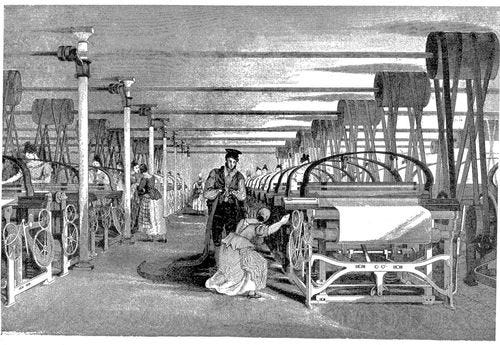The Liability of Choosing Luxury
courtesy of Mark Rielly, Director of ARRCC design studio
Over phases during the past 500 years, man has tried to advance by emphasizing science and its application for making our lives easier, more comfortable, and gradually, …. more indulgent. About 150 years ago, the industrial revolution outwitted the naturalists, arguing for greater support from government for taking minerals out of the earth, for building dams, collecting water and drilling through rocks for oil deposits that serve as energy for powering our homes and our lives.
For some years, governments invested the monies, did the harvesting from the land, and then provided the oil, petroleum, gas, water, and minerals for their people. Over time, the huge profits started landed up in pockets, and the governments allowed private companies to run the companies and sell the products of the land back to the government. Private companies of hard-working and ambitious people seeking profit began to dominate in most provisions supplied to the people. The basic knowledge shifted from governmental employees hired for their knowledge, to employees run to manage people with knowledge, thereby profiting from the harvest but without doing any hard labor, engineering calculations, or taking risks.
development of powerloom weaving to replace handlooms, c. 1835
The rise of the Industrial Revolution was filled with strife in the people, mainly between those who believed in the power of nature and those who believed in the power of developing the world by utilizing the vast resources of the earth. Forests were being destroyed for their trees, to build cities. Rivers were rerouted in order to create hydroelectric power for cities. Mountains were resculptured in order to use rocks for cement to build road between cities. Cities were build to gain greater control of the people, while providing them with the resources that would make their lives easier. The pro-development side argued that their inventions gave freedeom to people who never had privileges before, and showed how poor people could travel, use phones, and enjoy luxuries when they spent less time in toil.
Those people who wanted to live in peaceful nature, with fields they could harvest, the quietude of trees and the beauty of untouched mountains stayed outside the cities. But people flocked to the cities, tired of fighting with nature for good crops or movement of long distances to bring harvests daily to market. Industrialists wanted development and commerce that would raise the standard of living, and finance for projects that would create luxury but also fulfill dreams of invention, such as movement and communication through long distances. While trains and cars were being invented, people were taught that travel is important for knowledge. Airplanes and high-technology ships allowed such options. Cables and telephones allowed communication.
We often forget how quickly a few groups of men fueled the development of cities through destruction and tapping of natural resources. Today, we have central air-conditioning, wi-fi and the internet, personal cell phones that dial anywhere in the world, lights at any time of night or day, cars, motorcycles, and hot water at demand. In many countries, it has become a right demanded by the people, structured by companies to ensure pressure from large numbers, if ever an authority should try to reform mass use of natural resources for luxury.
Ancient texts describe flying vehicles, excellent water, luxurious fabrics, productive farming, and ornate jewels and furniture, as well as architecture. Ayurveda gives lengthy explanations for the use of one's life and how to guide the choices we make for maximum health so that we can lead a happy and fulfilling life. It clearly describes that we must align with nature and its rhythms for our own rhythms to work. Dinacharya, the daily routine, is not just a fashion. It is a set of instructions for aligning with the rhythms of sun and moon and aligning the body's physiology with nature. We have learned the molecular basis of dinacharya through clock genes, which turn our organs' functions on and off. When the body is not aligned with nature, the organs produce hormones and enzymes out of sequence with the body's natural physiology. People get sick from this mal-alignment. Many find ayurveda and align with nature in their routines, and miraculously the incurable medical problem disappears.
This is not acknowledged by the mainstream medical system because they do not want to see that the biology of alignment with nature is known to science. They are pro-industrialism, not pro-nature. People must shift and find ayurveda on their own, or else listen to the selective data that the medical system gives. Soon people will have to open their minds and own power of observation and choose from information, or suffer from selective information and the imbalances caused by blind following of industrial medicine.
week 109. TheSouthAsianTimes
Download the .pdf version of this column by clicking on the image.
Dr. Bhaswati Bhattacharya is a Fulbright Specialist 2018‐2023 in Public Health, a family physician in the Department of Medicine at Weill Cornell Medical College in New York, NY, and holds doctorates in pharmacology and Ayurveda. She teaches ayurvedic nutrition on global platforms and cleans her channels regularly with sesame oil, mustard oil, and ghee.
Her bestselling book Everyday Ayurveda is published by Penguin Random House.
To order an autographed copy, write to bhaswati@post.harvard.edu.
To learn more, visit www.drbhaswati.com







